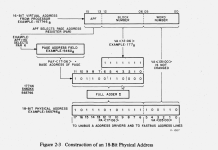jplr
Experienced Member
I understand that PDP-11 has a 16 bits address bus, while there are multiple versions of QBUS and memory boards (16/18/22bits).
I know there are many ways to extend an address bus with a MMU, the most common and simple MMU is probably 74ALS610.
Please, can you explain to me how this address translation is done in PDP-11/QBUS?
Thanks!
I know there are many ways to extend an address bus with a MMU, the most common and simple MMU is probably 74ALS610.
Please, can you explain to me how this address translation is done in PDP-11/QBUS?
Thanks!

